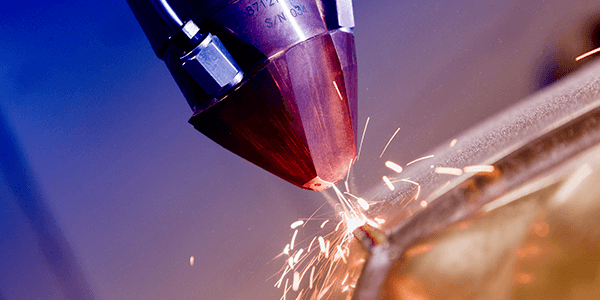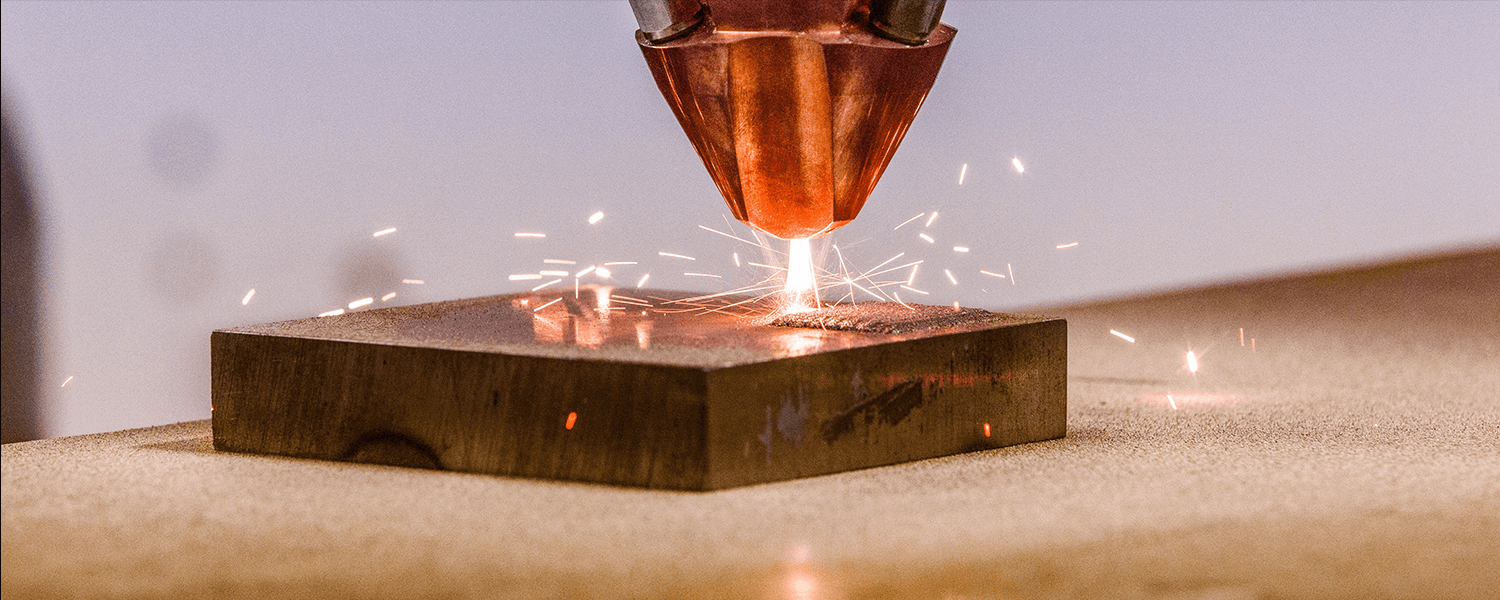What is direct metal deposition?
For the DMD process (Direct Metal Deposition), metal powder (50 µm to 150 µm) or wire is introduced into a laser beam, where it is melted and applied in layers. The layer thicknesses are up to 2 mm. The process is also very suitable for repairing complex and expensive components, e.g. in the aerospace industry. With the DMD process, it is possible to produce components from different powder materials (multi-material components) by simply changing the feed tank or the wire spool. Depending on the requirements, different areas of the same component can be provided with adapted material properties, for example with wear-resistant surfaces, tough volume properties and corrosion-resistant channels.
Compared to laser beam melting in a powder bed, the DMD process is able to work up to 10 times faster and produce larger components. However, the finest lattice structures or component details cannot be realized with this process – this is already evident with the metallic DIRECT METAL DEPOSITION (DMD) powder used, whose ideal particle size of 50 µm to 150 µm is more than three times larger than with laser beam melting. In production practice, the DMD process can be combined with classic ablative processes such as milling or turning. So-called hybrid machines enable the production of complex components using additive manufacturing, but can also take on the most precise milling jobs in the same setup.
Why direct metal deposition?
Laser deposition welding can be used to build new components and modify existing geometries. Not only can geometric changes be made, but the surface properties can also be permanently altered. Thermal conductivity, corrosion resistance and heat resistance can be increased and wear can be reduced at the same time. These functional layers can be applied to cost-effective base materials in a targeted manner (partially or over the entire surface), producing a virtually pore-free result. Popular applications include hot and cold forming, forging and deep-drawing tools.
Requirements for the coating material during build-up welding:
- abrasive wear resistance
- Corrosion/oxide resistance (even at high temperatures)
- Low coefficient of friction or high sliding friction
- Thermal conductivity
- Erosion resistance
- Mechanical processing/weldability
- Toughness
- Low cracking tendency/porosity
Areas of application and materials
| Applications | Material |
| Wear-resistant coatings | Iron- / cobalt- / nickel-based materials, cermets / metal-matrix composites |
| Creation of new geometries | Iron / nickel / cobalt / copper alloys |
| Repairs | Iron- /cobalt- /nickel-based materials |
| Bearing applications | Bronze |
For more detailed information on our materials and applications, we would be pleased if you would contact us.
WEAR PROTECTION APPLICATIONS
Application: Mold in the press hardening area
» Increase in productivity
» Production stability
performance compared to conventional material:
Service life: + 100% with + 25% costs in tool production
Increased production stability

Contact us
Mrs. Anna Mad Business Development Manager 3D Printing, Coating & Components T +43 664 615 6016 anna.mad@voestalpine.com
